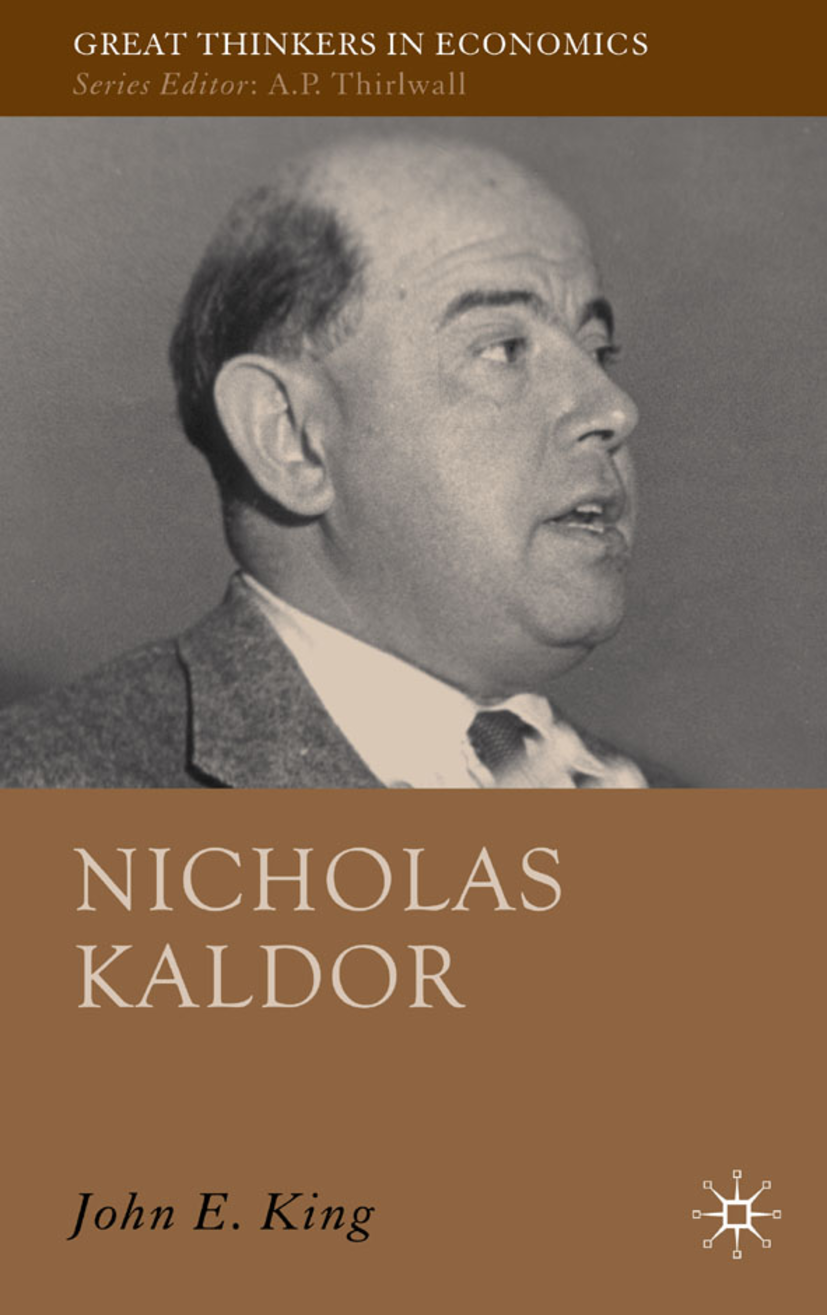From a Twitter discussion on balance-of-payments, I was reminded of a section of John E. King’s 2009 biography of Nicholas, titled by the name.
From pages 193‒195 (+ endnote + references in Bibliography):
Kaldor’s willingness to take extreme positions was very well illustrated by his post-1966 emphasis on exports as the only exogenous source of effective demand, which I criticised in Chapter 4, Section 7. The closely related balance-of-payments-constrained growth models seem, at first glance, to be more relevant to a (long-departed) world of fixed exchange rates than to the world we live in, with floating currencies and huge payments deficits (and surpluses) that can apparently be sustained indefinitely. Kaldor would probably have responded to this with four counter arguments. First, he would have claimed that it was true only of rich countries with currencies that were sufficiently attractive for foreigners to hold to make continuing large deficits sustainable (for example the United States, the Euro bloc, Britain and Australia). The balance of payments constraint remained binding for small, poor countries with unattractive currencies (Bolivia, Zambia, Thailand). Such countries also continued to be dependent on the IMF and the World Bank, which dictated deflationary responses to their payments deficits, including (but not confined to) devaluation. In any case, Kaldor would have insisted, the external constraint continued to operate at the regional or sub-national level: poor, relatively backward regions cannot depreciate against richer, more productive regions within their own country (this was why he had advocated the Regional Employment Premium).
Second, Kaldor would have invoked his habitual ‘elasticity pessimism’ to deny that (at least for countries with initially serious problems of international competitiveness like the United Kingdom) currency depreciation would have the stimulating effect on exports, and the dampening effect on imports, that mainstream theory dictated. In this he would have been vindicated by evidence concerning the ‘Kaldor paradox’: countries that devalued in the 1950s, 1960s and 1970s tended to lose market share in world trade, while those countries whose currencies appreciated gained in market share (McCombie and Thirlwall 1994, pp. 289–99). Third, he might well have accepted Paul Davidson’s argument that a floating exchange rate regime introduced an unwelcome element of uncertainty into the world economy, discouraging investment and slowing growth across the board, so that a return to fixed exchange rates was both possible and desirable (Davidson 2006). 13
Fourth, and decisively, Kaldor would have argued that there were two channels through which the balance of payments constraint operated, not one. In addition to the policy channel (‘stop-go’, or demand deflation in response to payments deficits), there is an automatic process through which poor export performance leads to sluggish aggregate demand and thence to low business investment and slower output and productivity growth, in the absence of any policy response whatsoever. This fourth defence hinges on the controversial proposition that, for any individual country or region, exports are the only exogenous source of demand, with investment (and consumption) being entirely endogenously determined. This is a very strong assumption, but if it is accepted, the external constraint on growth becomes binding in all circumstances, and cannot be written off as historically or geographically specific, or confined to the Bretton Woods epoch (see also McCombie and Thirlwall 1994).
…
Notes
…
- Note, however, his stated belief that a return to Bretton Woods in the late 1970s would have made things worse (Kaldor 1978c, p. xxi). Not all Post Keynesians agree with Davidson on this important point, Wray (2006) for example arguing that flexible exchange rates are a necessary condition for national economic sovereignty.
…
Bibliography
…
Davidson, P. 2006. ‘Liberalization or regulating international capital flows?’, in L.-P. Rochon and S. Rossi (eds), Monetary and Exchange Rate Systems: A Global View of Financial Crises, Cheltenham: Elgar, pp. 167–90.
…McCombie, J. S. L. and Thirlwall, A. P. 1994. Economic Growth and the Balance-of-payments Constraint. Basingstoke: Macmillan.
…
Wray, L. Randall. 2006. ‘To fix or float: theoretical and pragmatic considerations’, in L.-P. Rochon and S. Rossi (eds), Monetary and Exchange Rate Systems: A Global View of Financial Crises, Cheltenham: Elgar, pp. 210–31.
Now, I do believe in this (for the present rules of the game), as it otherwise stock-flow ratios rise without limits, fixed exchange rates or floating, something King seems to be fine with!
Also, King is extremising Kaldor’s views, which are extreme nontheless—not extreme in a negative way. What’s exogenous and endogenous also changes with the time-period we’re looking at. Something which is exogenous in the short-run can be consistently thought of as endogenous in the long-run.
